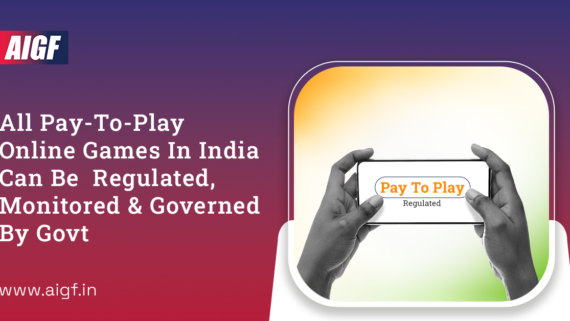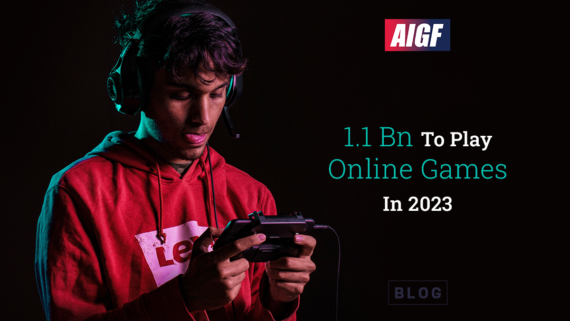According to a KPMG report, in 2020, India’s game downloads in the casual mobile game segment are the highest in the world (excluding China). The downloads from Q1 to Q3 in 2020 are 7.3 billion, accounting for 17% of the world’s total mobile device downloads.
Indian Gaming: 10 Trends That Show Online Gaming Is Booming In India
The Covid-19 pandemic has brought countless changes to our health, habits, and relationships with food, family, and many other things. People are confined at home, trying to accept the interrupted life, they have a lot of time to kill. And, besides that, they also want to play games.
Lockdown Boost
According to a survey by advertising technology company InMobi, during the pandemic, nearly 45% of mobile users in India started playing games on their smartphones. The lasting impact of Covid-19 indicates that people not only spend more time on mobile games but also try many different applications. The average daily time spent on gaming applications has increased by 40%.
According to a KPMG report, in 2020, India’s game downloads in the casual mobile game segment are the highest in the world (excluding China). The downloads from Q1 to Q3 in 2020 are 7.3 billion, accounting for17% of the world’s total mobile device downloads.
A Robust Past
But the online gaming revolution started earlier. In the years before the pandemic, the market experienced tremendous growth, with the number of players and user engagement increasing. From about 250 million gamers at the end of the 2018 fiscal year to the middle of the 20th fiscal year, the number of gamers in India has grown to nearly 400 million, becoming the world’s second-largest online player base after China.
That Pleasantly SustainedAnd Promises A Fantastic Future
The online game market in India is estimated to be 136 billion rupees in fiscal year 21 and is expected to grow at a compound annual growth rate (CAGR) of 21% in fiscal year 21 –25 to reach a scale of Rs. 290 billion. Among the total scale, the casual online game segment is the most significant, reaching Rs 60 billion in FY21, accounting for more than 40% of total online game revenue. In terms of users, the online casual game segment had 420 million players in FY21, accounting for 97% of the total number of game players in India, and it is expected to maintain this share until FY25.
Gaming Has Become Mainstream
As the growth of the number of players reaches a critical point, online games are becoming more and more popular in India. In addition to metropolitan areas and first-tier cities, penetration into second-tier cities has also begun to gradually expand. In addition, there are more and more female game players, and the social stigma and resistance to online games, especially casual games, are gradually fading. According to InMobi’s report, women accounted for 43% of Indian mobile gaming audiences, and 12% of them were between 25-44, and 28% in 45 years.
Esports As A Standalone Sub-Segment
Esports has always been a growing and emerging sub-segment in the country. India has about 10 to 15 million viewers in the fiscal year 2020, and it is expected to grow exponentially by FY25 to more than 130 million viewers. It is expected that the Olympic Association of India will receive brand sponsorship, publishers to promote the game, and the interest of new players entering the value chain, including organizers and even participating teams. According to KPMG’s estimates, India’s esports segment is expected to grow at a compound annual growth rate of 27% in fiscal year 21-25, reaching a scale of 5.7 billion rupees.
New Trends Driven By Popular Games
Games such as PUBG Mobile and Ludo King have helped change the game market in India. PUBG Mobile, now renamed “Battlegrounds Mobile India”, is the first to launch multiplayer mobile games in India. This was previously considered a data-intensive activity, not to mention its impact on bolstering the esports and streaming ecosystem in the country. On the other hand, Ludo King attracted a relatively low base of new players in India (45 and above) and transformed the game into a mainstream entertainment and social media alternative.
Bountiful game developers, local languages
Due to the increasing importance of this segment, the number of online game developers in the casual mobile game segment in India has increased. In recent years, the number of various types of games has also increased, thereby providing players with a wide range of games. In addition, the most popular games in India, such as Octro’s Teen Patti, Ludo, etc., provide the option to play in local languages (such as Hindi, Gujarati, Marathi, etc.) to try and attract a large number of local audiences.
Growing digital and gaming sophistication
Indians are becoming more and more digitized, and their awareness of online payment models, OTT, and other forms of entertainment has continued to increase, which has led to a shift to online games. Artificial Intelligence (AI) is also widely used in game development (using AI-generated storyline), player engagement, interactive in-game experiences, and customizing each player’s game journey. In addition, although cloud gaming is in its initial stages, it may change the gaming experience, especially in markets such as India, where Internet access costs are low and hardware investment capabilities are limited.
The Smartphone Resolution
According to KPMG and Cisco estimates, there were more than 500 million smartphone users in India in 2019, and they are expected to increase to 842 million by 2024. Researchers believe that at the heart of it will be the new JioPhone Next budget smartphone, built-in in collaboration with Google, which uses 320 million users of 2G feature phones and 540 million users who have not yet purchased the first mobile devices.
Credits: India Times











Comments
Comments are closed.